Homepage / News Details
Summary of basic knowledge of sewage treatment
- Categroy:News
- Author:
- Origin:
- Release Time:2022-01-28 14:07
- Views:
【Summary】Wastewater quality;Common Basic Concepts
Summary of basic knowledge of sewage treatment
【Summary】Wastewater quality;Common Basic Concepts
- Categroy:News
- Author:
- Origin:
- Release Time:2022-01-28 14:07
- Views:
Wastewater quality
SS: solid suspended substance, generally in mg/L. Generally refers to: filter paper filter water sample, the solid mass of the filtered interception after drying in 105℃ temperature after constant weight.
COD: chemical oxygen demand, generally in mg/L. The determination principle of COD is: with a strong oxidant (China's legal use of potassium dichromate), under acidic conditions, the oxidation of organic matter into CO2 and H2O consumption of oxygen, known as chemical oxygen demand. CODCr, usually COD. COD advantages: can accurately represent the content of organic matter in sewage, determination time only a few hours, and is not affected by water quality. The higher the cod is, the more serious the pollution of organic matter is.
BOD: Biochemical oxygen demand, generally mg /L. The amount of dissolved oxygen consumed by microbial decomposition of organic pollutants.
Nh3-n: Ammonia nitrogen, usually in mg/L. Ammonia nitrogen refers to nitrogen in water in the form of free ammonia (NH3) and ammonium ion (NH4+).
TP: total phosphorus, generally in mg/L. Phosphorus compounds in sewage can be divided into organic phosphorus and inorganic phosphorus.
Coliform number: the number of coliforms per liter of water sample, measured in units /L.
Total bacterial count: the total number of coliforms, pathogens, viruses and other bacteria, expressed as the total number of bacterial colonies per milliliter of water sample.
Wuhan Green Environmental Protection has a perfect service system and supporting professional environmental engineering team, with lofty environmental responsibility and obligations to provide long-term maintenance of free sewage treatment solutions, is a brand in the industrial wastewater management industry in Hubei Province. In the past 18 years, the company has designed and constructed hundreds of turnkey sewage treatment projects.
Common Basic Concepts
Anaerobic: In biological treatment of wastewater, the condition in which there is no dissolved oxygen and no nitrate nitrogen. Dissolved oxygen is below 0.2mg/L.
Anoxia (anoxia) an environmental condition characterized by insufficient or no dissolved oxygen but nitrate nitrogen in the biological treatment of wastewater. Dissolved oxygen is about 0.2-0.5mg/L.
Aerobic: In biological treatment of wastewater, the presence of dissolved oxygen or nitrate nitrogen. Dissolved oxygen is above 2.0mg/L.
Aeration: The process of forcing only oxygen from air into a liquid in order to obtain sufficient dissolved oxygen. In addition, aeration has to prevent suspension from sinking, strengthen the purpose of organic matter in the pool and microbial and dissolved oxygen contact, so as to ensure that microorganisms in the pool under the condition of sufficient dissolved oxygen, the oxidation of organic matter in sewage decomposition.
Activated sludge: Sludge - like flocculation formed by various organisms such as bacteria, fungi, protozoa and metazoa and inorganic substances such as metal hydroxide. It has good adsorption, flocculation, biological oxidation and biosynthesis properties.
Activated sludge process: a wastewater treatment method for removing organic pollutants in sewage by means of coagulation, adsorption, oxidation, decomposition and precipitation of activated sludge in sewage.
Biofilm process: a wastewater treatment process in which the wastewater is exposed to a biofilm growing on the surface of a fixed support, and the biofilm is used to degrade or transform organic pollutants in the wastewater.
Air float: air float is in the water through or produce a large number of fine bubbles, so that it adheres to the suspended particles, resulting in a state of density less than water, using the buoyancy principle to make it float on the water, so as to obtain solid-liquid separation method. The ways of producing microbubbles include aeration and gas dissolution.
Coagulation: the purpose of coagulation is to add some agents to the water (coagulant or coagulant aid), so that the colloidal particles in the water can be difficult to precipitate each other, grow up to the extent of natural precipitation, this method is called coagulation precipitation.
Filtration: in the process of water treatment, filtration generally refers to the process of intercepting suspended substances in water with granular packing layer such as quartz sand, so that the water can be clarified. The main role of filtration is to remove suspended or colloidal substances in water, especially can effectively remove the precipitation technology can not remove the smile particles and bacteria, COD and BOD also have a certain degree of removal effect.
Sedimentation: The process of removing suspended solids from water by gravity sedimentation using the density difference between suspended solids and water.
Releate News

Time of issue : 2024-05-08 13:15:35

Time of issue : 2024-04-29 13:33:08

Time of issue : 2024-04-22 08:56:03
CONTACT US
PRODUCTS
CALCIUM HYPOCHLORITE
TCCA
SDIC
BCDMH
FEEDBACK
© 1999-2018 北京网站建设有限公司 Copyright © 2012-2022 All Rights Reserved Powered by www.300.cn 冀ICP备12012949号 津公网安备 12010302002173号 Seo tag

